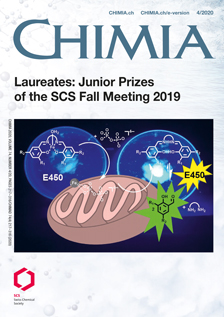Probing the Electronic Structure of Spectator Oxo Ligands by ¹⁷O NMR Spectroscopy
DOI:
https://doi.org/10.2533/chimia.2020.225PMID:
32331537Keywords:
Chemical shift tensor, Nmr spectroscopy, Olefin epoxidation, Olefin metathesis, Spectator oxo ligandAbstract
Spectator oxo ligands are ubiquitous in catalysis, in particular in olefin epoxidation and olefin metathesis. Here we use computationally derived 17O NMR parameters to probe the electronic structure of spectator oxo ligands in these two reactions. We show that 17O NMR parameters allow to distinguish between doubly-bonded and triply-bonded oxo ligands, giving detailed insights into the frontier molecular orbitals involved in the metaloxo bonds along the reaction pathway. On the one hand, our study shows that in olefin epoxidation catalysed by methyltrioxorhenium (MTO), the oxo ligand significantly changes its bonding mode upon formation of the oxygen-transferring Re-oxo-bisperoxo-species, changing its nature from a doubly bonded to a triply bonded oxo ligand. On the other hand, only minor changes in the binding mode are found along the olefin metathesis reaction pathway with Mo- and W-based oxo-alkylidene species, in which the oxo ligand behaves as a triply bonded ligand throughout the reaction. This finding contrasts earlier studies that proposed that the change of binding mode of the oxo ligand was key to metallacyclobutane formation.
Downloads
Published
Issue
Section
License
Copyright (c) 2020 Christopher P. Gordon, Christophe Copéret

This work is licensed under a Creative Commons Attribution-NonCommercial 4.0 International License.







